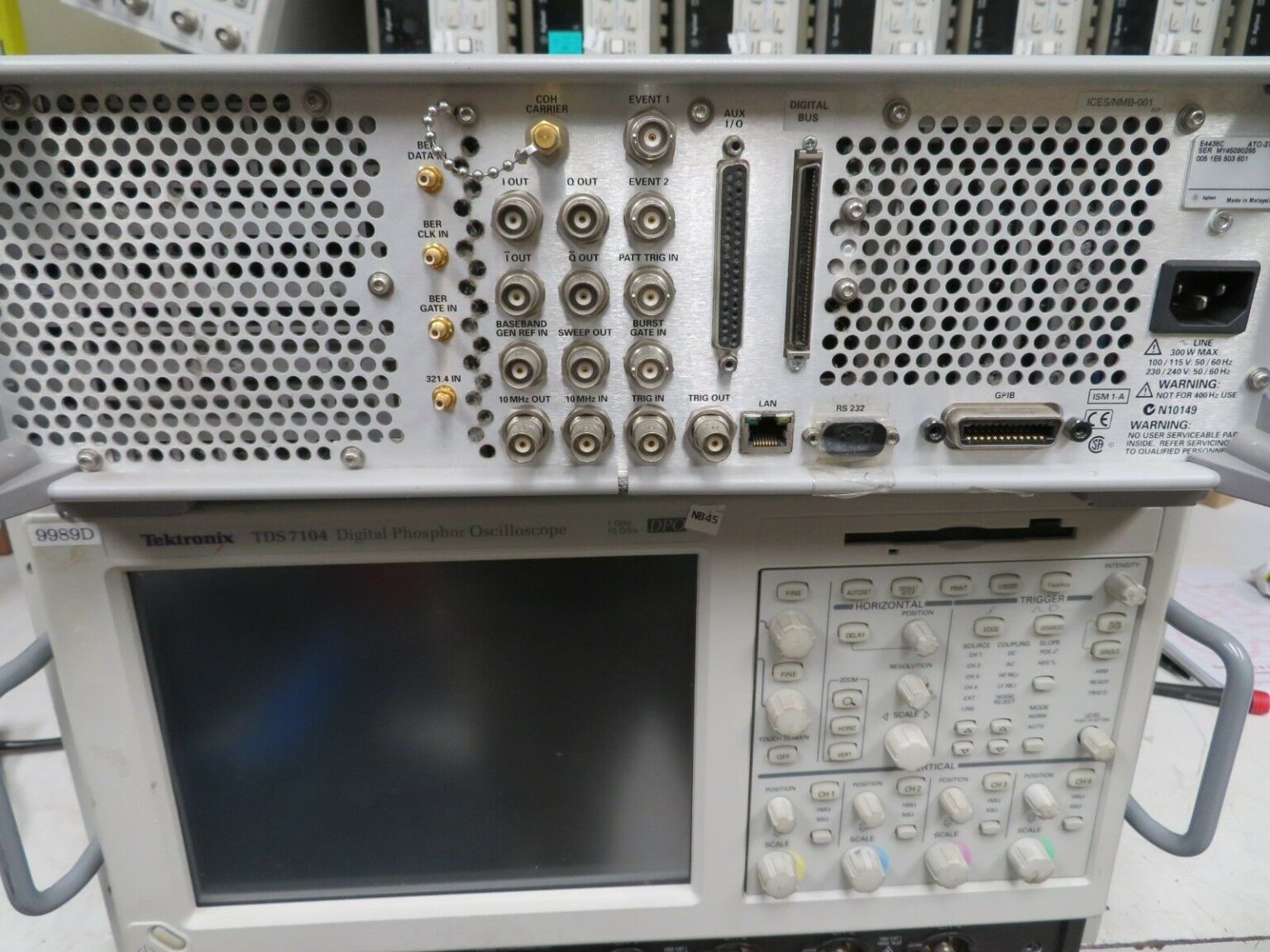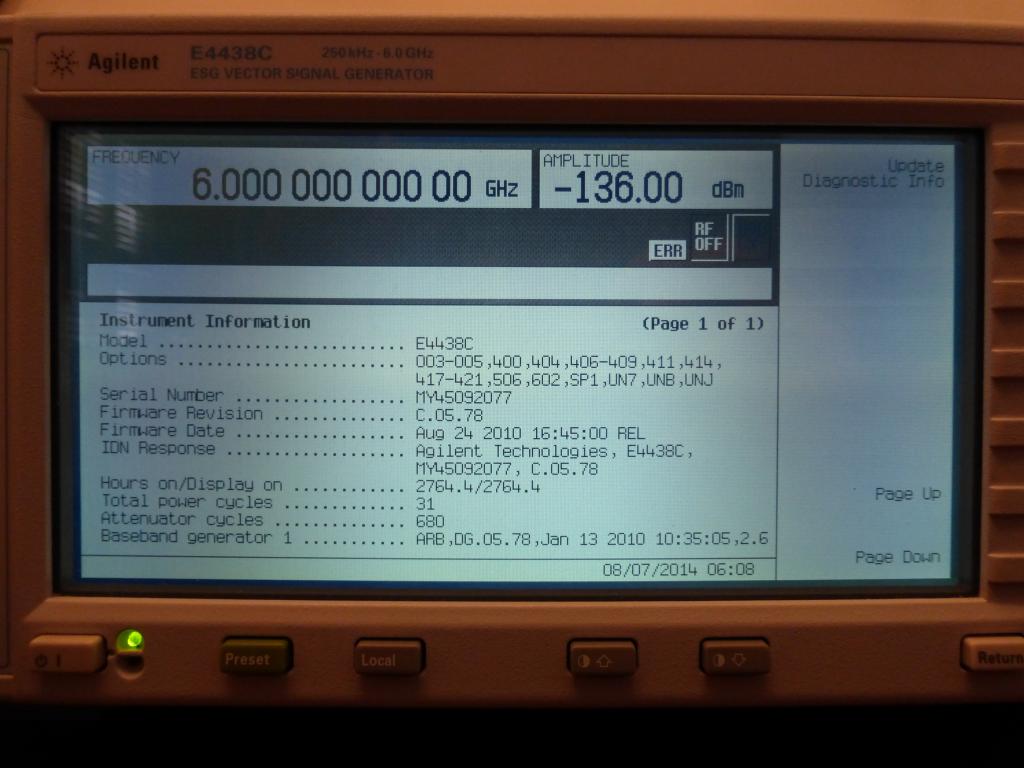
#E4438c generator#

64 MSa playback memory and 1 GSa storage.80 MHz dual mode internal baseband generator: arbitrary waveform and real-time I/Q.
#E4438c upgrade#
Its modular architecture makes it easy to configure the instrument with the level of performance and signal creation capability you need today with the option to upgrade in the future. The Keysight (Agilent) E4438C 250 kHz – 6 GHz Vector Signal Generator is an adaptable platform with optional capabilities to customize the instrument for baseband and RF test applications ranging from simple distortion test and general purpose troubleshooting to baseband coding algorithm development, advanced transceiver design verification, and high volume manufacturing.

Offering an internal baseband generator with arbitrary waveform and real-time I/Q capabilities, ample waveform playback and storage memory, and a wide RF modulation bandwidth, the E4438C ESG is equipped to test today’s complex wireless systems and their components. The Keysight (Agilent) E4438C 250 kHz – 6 GHz Vector Signal Generator combines outstanding RF performance and sophisticated baseband generation to deliver calibrated test signals at baseband, IF, and RF frequencies up to 6 GHz. Tektronix Arbitrary Waveform Generators.California Instruments AC Power Sources.

#E4438c portable#
Handheld / Portable Data Acquisition Loggers.Wireless Mobile Device Testers (Cell Phones & Tablets).RF Cable & Antenna Analyzers and Line Sweep Tools.The trigger signal has aligned at "7", so additional trigger signals will be ignored, until the W-CDMA real-time is toggled (On/Off) or software's "Apply" is executed. MXG/EXG starts a newly synched frame generation. The trigger delay time shown at this point includes the following: trigger detection and the (trigger delay + sync marker frame cycle (W-CDMA default is 80 ms). The trigger delay count has been completed. MXG/EXG responds to the trigger signal ( Pattern Trigger in 1) and starts the trigger delay count to align the frame timing with the trigger timing. At this step, the output signal is W-CDMA modulated, but the modulated signal is uncorrected.Ĭustomer executes a trigger signal. But, there is no front panel indication of the instrument being armed. The W-CDMA application is ready to receive a trigger signal. The generated IQ/RF signal is unstable for a short time, and frame timing aligned at “2" is interrupted. The MXG/EXG responds to the trigger signal ( Pattern Trigger in 1) and initiates the trigger delay count to align the frame timing with the trigger timing.įor the DPCH mode, the trigger delay value is: 1024 chip + Timing Offset + Timeslot Offset + SFN-CFN Offset + External Delay TimeĪfter the delay count is completed, the instrument stops the CW signal output and starts the W-CDMA modulated signal output.Īt this point, if a second trigger occurs, the MXG/EXG ignores the second trigger, because after the first trigger, the instrument has already aligned with the timing at “2”.Ĭustomer executes the “Apply” operation. The RF signal is set automatically set to CW. Instrument is armed (Refer to instrument's display).
#E4438c software#
The software was set for a single frame synchronization mode measurement:

For the N7600B W-CDMA/HSPA+ specific SCPI commands, refer to SCPI. Refer to your instrument's documentation at for the correct instrument SCPI commands. Figure 3 illustrates the single synchronization mode behavior, when the instrument is in E4438C compatible mode.


 0 kommentar(er)
0 kommentar(er)
